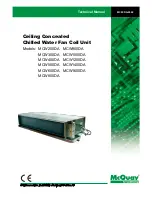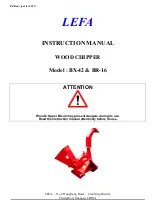
JOHNSON CONTROLS
8
FORM 160.69-N3
ISSUE DATE: 10/30/2015
SECTION 1 - SHIPPING
Form 7 - Split Shells
• K1 and K2 Optional Shipment.
• K3, K4 and K7 Standard Shipment.
Shipped as four major assemblies. Unit first factory as-
sembled, refrigerant piped, wired and leak tested; then
dismantled for shipment. Compressor/motor assem-
blies removed from shells and skidded.
Evaporator and condenser shells are separated at tube
sheets and are not skidded. Refrigerant lines between
shells are flanged and capped, requiring no welding.
All wiring integral with compressors are left on them.
All wiring harnesses on shells are removed. All open-
ings on compressors and shells are closed and charged
with dry nitrogen (2 to 3 psig) (14-21 kPa).
The control center, oil pump panel, and associated wir-
ing remain mounted on the evaporator shell. Miscel-
laneous packaging of tubing, wiring, oil, isolators, etc.;
refrigerant charge shipped separately.
When more than one chiller is involved, the major
parts of each unit will be marked to prevent mixing
of assemblies. (Piping and Wiring Drawings to be fur-
nished by Johnson Controls.)
INSPECTION – DAMAGE – SHORTAGE
The unit shipment should be checked on arrival to see
that all major pieces, boxes and crates are received.
Each unit should be checked on the trailer or rail car
when received, before unloading, for any visible signs
of damage. Any damage or signs of possible damage
must be reported to the transportation company imme-
diately for their inspection.
Johnson Controls will not be responsible
for any damage in shipment or at job site
or loss of parts. Refer to Shipping Damage
Claims (Form 50.15-NM).
When received at the job site all containers should
be opened and contents checked against the packing
list. Any material shortage should be reported to John-
son Conrols immediately. Refer to
Shipping Damage
Claims (Form 50.15-NM).
Rigging and lifting should only be done by a professional rigger in accordance with a written rigging
and lifting plan. The most appropriate rigging and lifting method will depend on job specific factors,
such as the rigging equipment available and site needs. Therefore, a professional rigger must determine
the rigging and lifting method to be used, and it is beyond the scope of this manual to specify rigging
and lifting details.









































